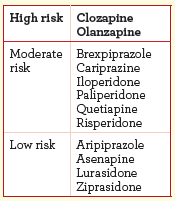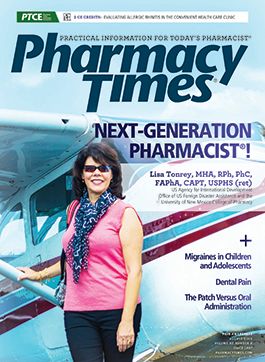Case Studies (August 2016)
What should these pharmacists do?
CASE 1

One year ago, JP, a 57-year-old obese man was diagnosed with a non—ST-elevation myocardial infarction. He underwent a percutaneous coronary intervention (PCI) and received a drug-eluting stent and dual antiplatelet therapy (DAPT), including ticagrelor. JP comes to the cardiology clinic for a follow-up visit. He currently smokes and has hypertension, hyperlipidemia, and type 2 diabetes. JP has tolerated his DAPT without bleeding complications. The cardiologist is wondering if he should continue JP’s DAPT.
As the pharmacist, what is your recommendation regarding continuing DAPT in JP?
CASE 2
ML is a 25-year-old, 5-ft 4-inch, 81-kg woman, with a body mass index of 30.6 kg/m2, who comes to your pharmacy with a prescription for olanzapine. She was recently given a diagnosis of schizophrenia after an acute psychotic episode last month, but has been stabilized on a 15-mg once-daily dose of olanzapine. Since leaving the inpatient facility, ML has been reading about olanzapine on the Internet. She is very concerned about possible weight gain associated with the medication and is considering not taking it. ML asks you, the pharmacist, about alternative treatment options for her schizophrenia.
As the pharmacist, how would you address ML’s concerns?
ANSWERS
Case 1:According to the March 2016 update of the American College of Cardiology/ American Heart Association guidelines, continuation of DAPT (clopidogrel, prasugrel, or ticagrelor) for longer than 12 months is reasonable for patients who experienced acute coronary syndrome and underwent stenting, as long as they did not previously bleed on DAPT and are at sufficiently low risk of experiencing a future bleed (strength of recommendation = 2b; weak recommendation, and high-quality evidence). Calculating a patient’s “DAPT score” (which accounts for age, presence of diabetes, smoking status, PCI , prior myocardial infarction [MI], heart failure, or ejection fraction <30%, as well as index procedural characteristics, including MI at presentation, vein graft stenting, and stent diameter <3 mm) can aid in deciding whether to continue DAPT. The DAPT score, which can range from —2 to 10 (daptstudy.org/for-clinicians/score_calculator.htm), provides a comparative assessment of a patient’s risk and benefit of continuous therapy. A score of ≤1 suggests a patient is at a 2.5-fold higher risk of having a bleeding event rather than an ischemic event, whereas a score ≥2 suggests an 8-fold higher risk of having an ischemic event rather than a bleeding event. cause JP did not experience a bleeding even during the first 12 months and has a DAPT score of 5, he is a reasonable candidate for continuation of DAPT beyond the first 12 months.
Case 2:It is true that olanzapine is associated with greater weight gain, as well as increases in blood pressure, blood glucose, and triglyceride levels, and decreases in high-density lipoprotein levels than some other antipsychotics (table); however, ML should be strongly encouraged to continue taking olanzapine until she discusses other options with her psychiatrist. Until then, ML should be counseled that olanzapine-associated weight gain can be mitigated through diet and exercise. In addition, the pharmacist should discuss with ML that although other agents may carry a lower risk of metabolic adverse effects, they may not be as effective for controlling her symptoms.
Dr. Levay is a PharmD candidate from the University of Connecticut School of Pharmacy, Storrs, Connecticut. Dr. Nguyen is an outcomes research fellow at Hartford Hospital, Hartford, Connecticut. Dr. Coleman is professor of pharmacy practice at the University of Connecticut School of Pharmacy.
function showAnswer() {document.getElementById("answer").style.display = 'block';document.getElementById("link").style.display = 'none';}

